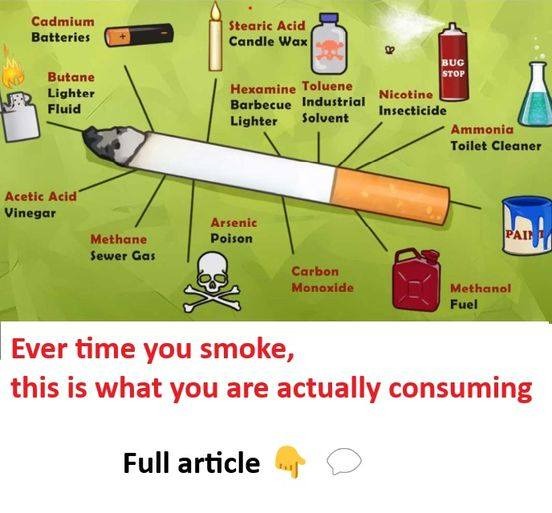One of the fatty acids used in making candles and other wax goods is stearic acid. Inhaling it may nevertheless add to smoking’s hazardous consequences, even if it’s less toxic than some of the other compounds mentioned.
Acetic Acid: An Ingredient in Vinegar
Cigarette smoke contains acetic acid, the same chemical that gives vinegar its distinct flavor and aroma. When breathed in, acetic acid irritates the nasal passages, throat, and eyes, and long-term exposure may lead to respiratory issues.
The Industrial Solvent Toluene
Industrial solvents like toluene are found in products like adhesives, paint thinners, and nail polish removers. Toluene is an additional layer of the harmful effects of cigarette smoke that may induce vertigo, migraines, and neurological damage when inhaled.
An Addict’s Devotion to Nicotine
One of the most addictive substances in cigarettes is nicotine. It makes you feel good because it triggers the release of dopamine. But nicotine addiction makes quitting a challenge since it increases tolerance and dependency. Heart disease and hypertension are both exacerbated by nicotine’s effect on the cardiovascular system.
Different Types of Carbonate
A number of sectors make use of carbonates, including calcium carbonate, in their operations, including building and manufacturing. Cigarette smoke contains carbonates, which irritate the respiratory tract and make existing lung problems worse.
All Things Considered
Cigarette smoke is a deadly cocktail due to the mixing of these substances. From respiratory troubles and cardiovascular illness to different types of cancer and systemic toxicity, each drug contributes to a wide spectrum of health concerns. The chance of developing serious health problems and overall life expectancy are both greatly increased by chronic inhalation of these substances.
Importance of the Conclusion
Continue Reading in next page

